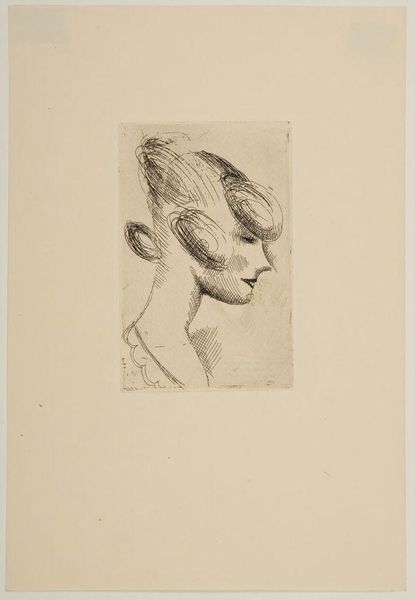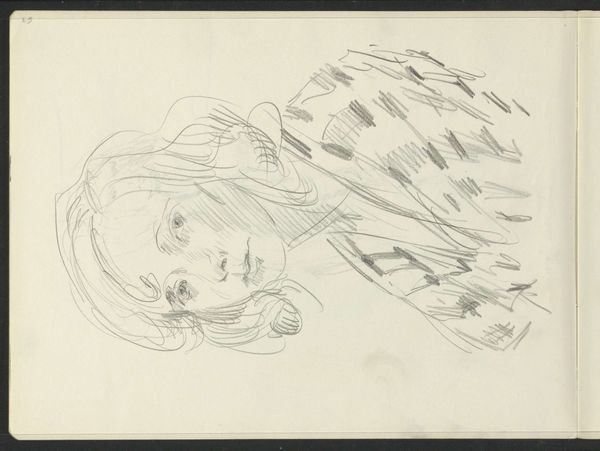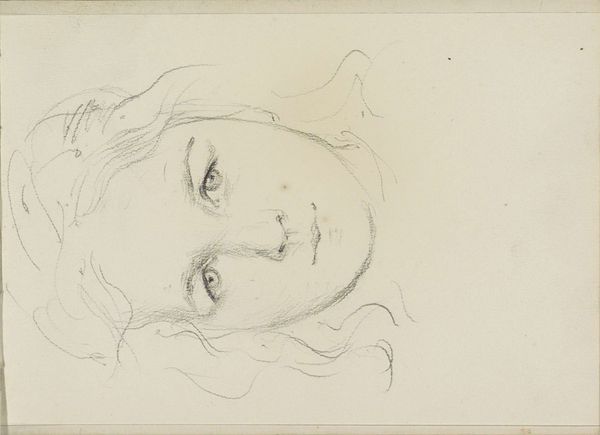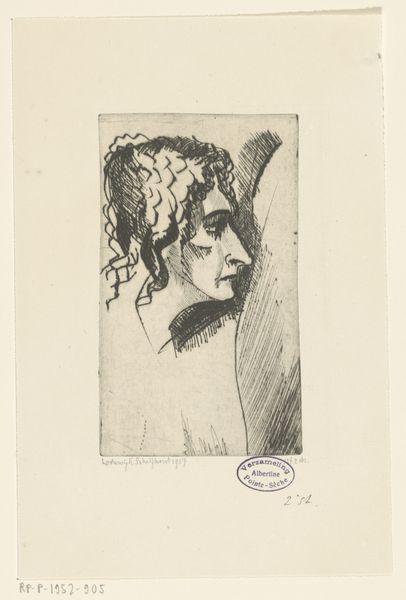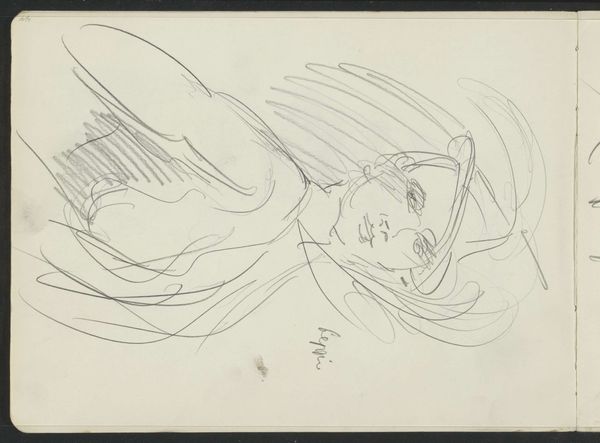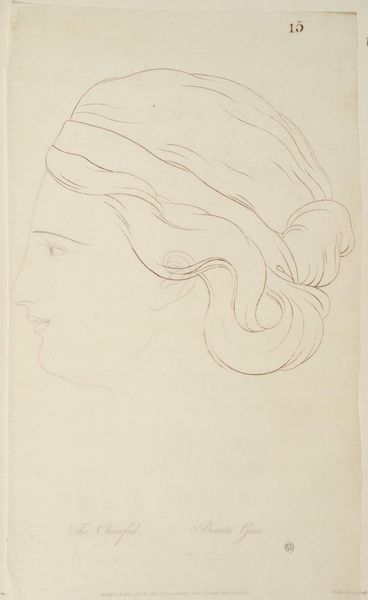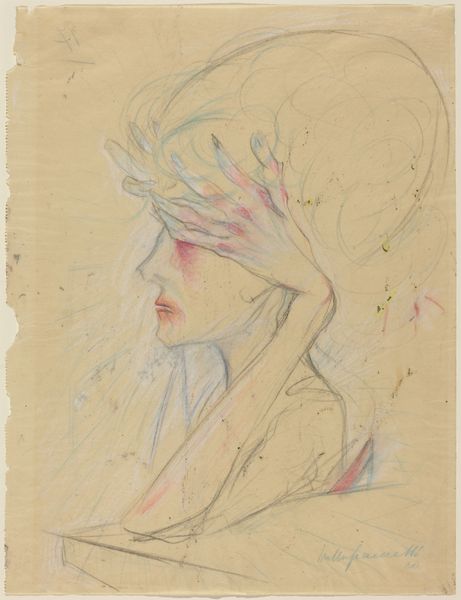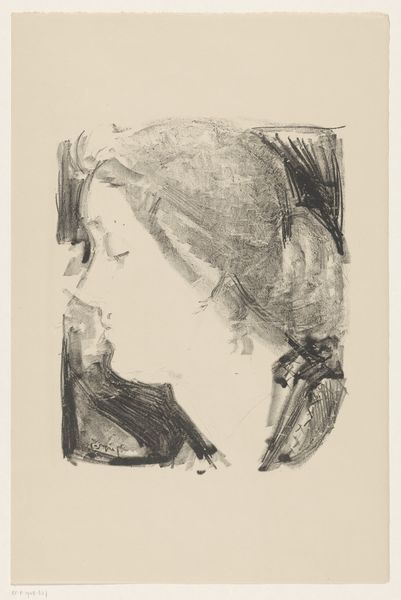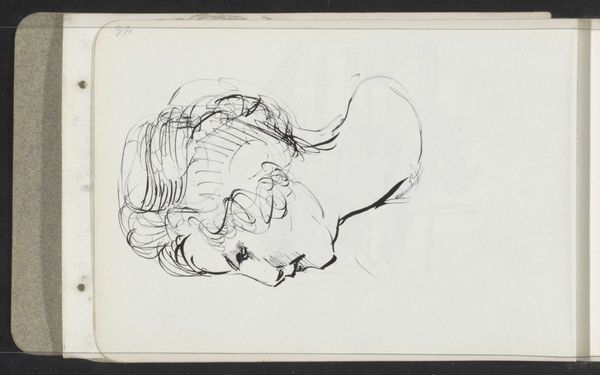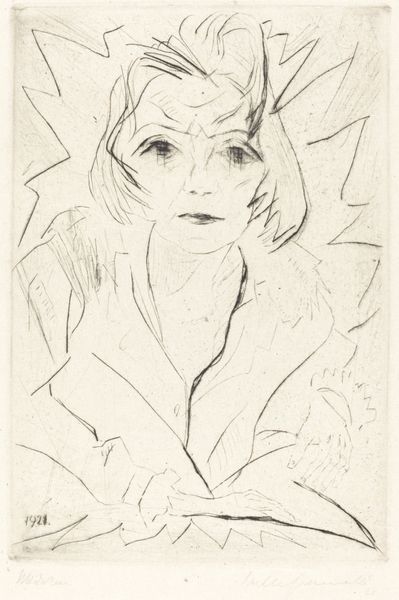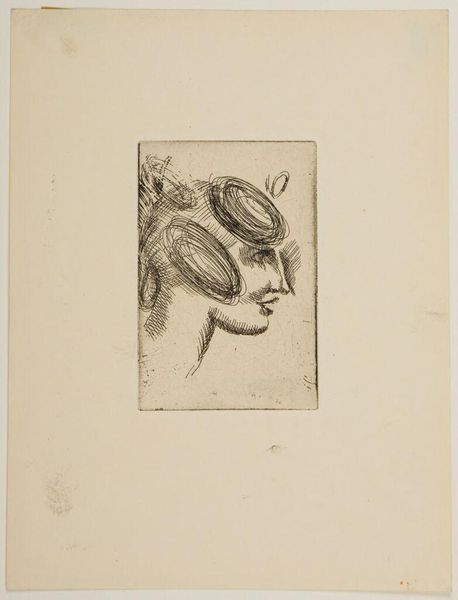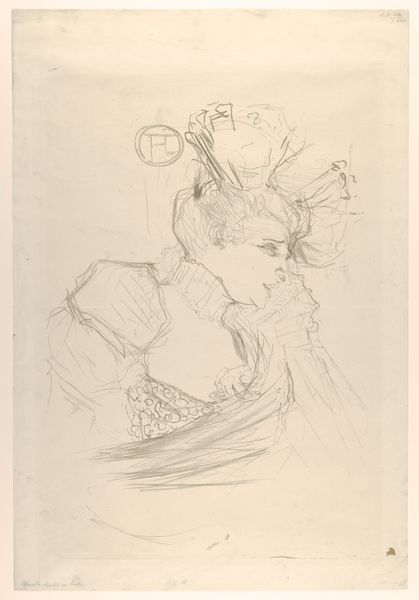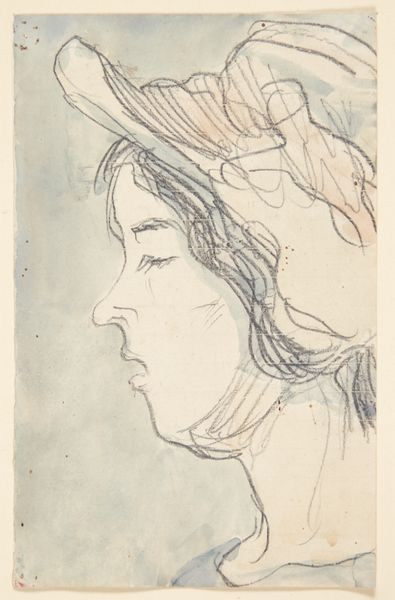
drawing, pencil
#
portrait
#
drawing
#
art-nouveau
#
figuration
#
pencil drawing
#
pencil
#
portrait drawing
Dimensions: height 179 mm, width 114 mm
Copyright: Rijks Museum: Open Domain
Editor: Here we have Jan Toorop’s “Portret van Elsje Lukwel,” a pencil drawing from 1906, residing here at the Rijksmuseum. There's a delicate and ethereal quality to it, almost dreamlike, from what looks to be a limited palette. How do you interpret this portrait? Curator: What immediately strikes me is the almost Pre-Raphaelite yearning imbued in this young woman's gaze. It’s 1906, so Art Nouveau is peaking. Look at the stylized flow of her hair, how it mimics the whiplash curve that was so fashionable then. But it's not just aesthetics. This drawing resonates with a sense of the subject’s interiority. The cultural memory of youthful female virtue was then potent. Editor: Virtue? I wouldn't immediately jump to that conclusion. Curator: Consider the symbolism inherent in portraits of young women then. Often, these depictions weren't merely about capturing likeness but also about representing ideals - innocence, beauty, and potential. Does this drawing perhaps invite us to reflect on the psychological pressures placed upon young women at the time? Editor: That's a powerful thought. So, you're seeing this portrait not just as a pretty picture, but as a window into the expectations and constraints faced by women of that era? Curator: Precisely. Toorop invites us to consider the layers of meaning embedded in such a seemingly simple image, provoking dialogue about cultural memory, psychology, and gender. It suggests that the image can tell tales exceeding the image itself, carrying more emotional freight than appears on the surface. Editor: I'm going to walk away with a completely new perspective on portraiture. It’s not only aesthetic appeal but how the artwork interacts within time and place.
Comments
No comments
Be the first to comment and join the conversation on the ultimate creative platform.

